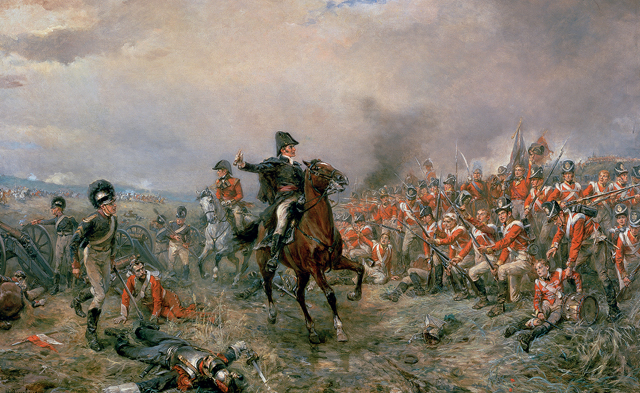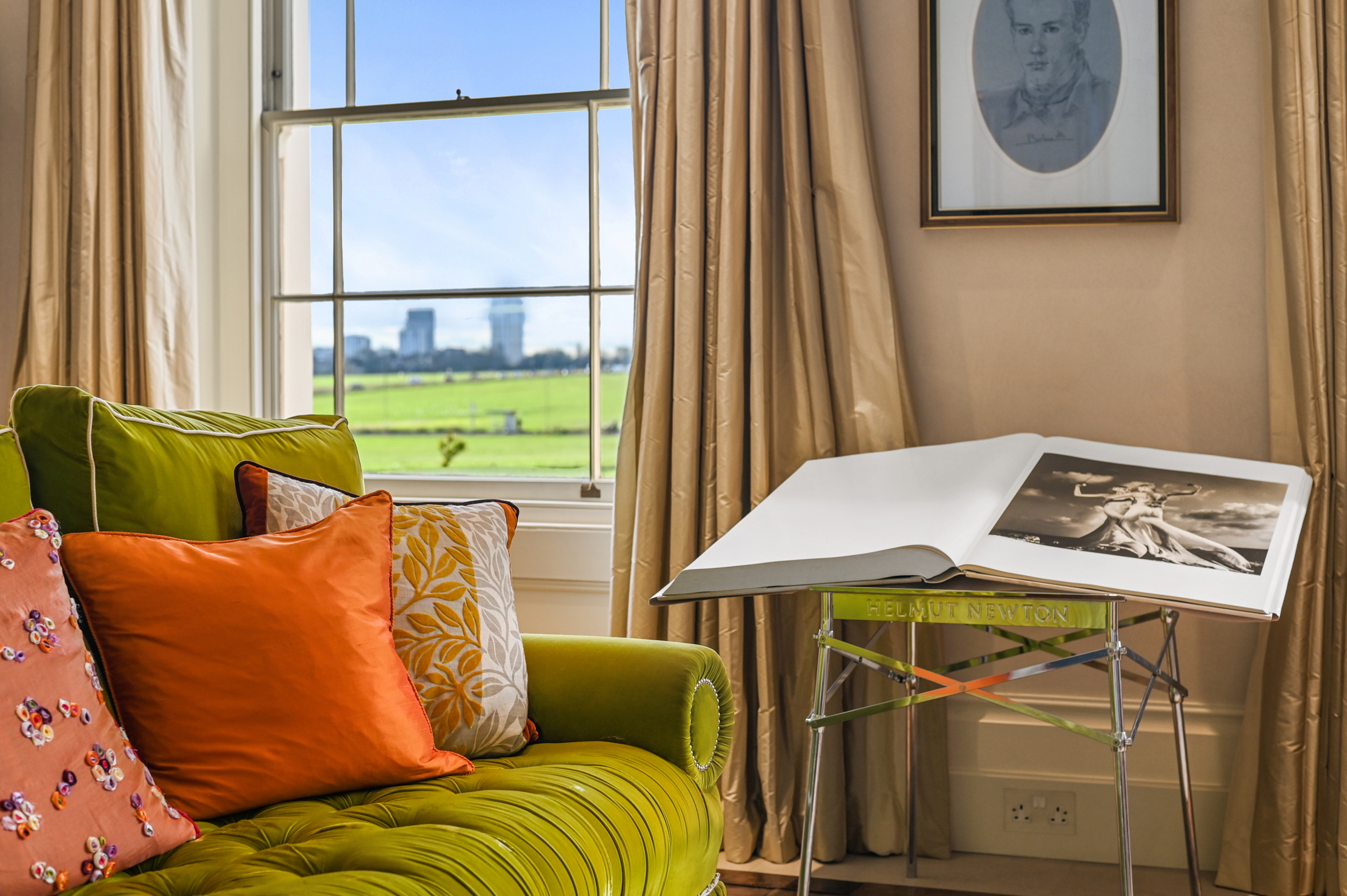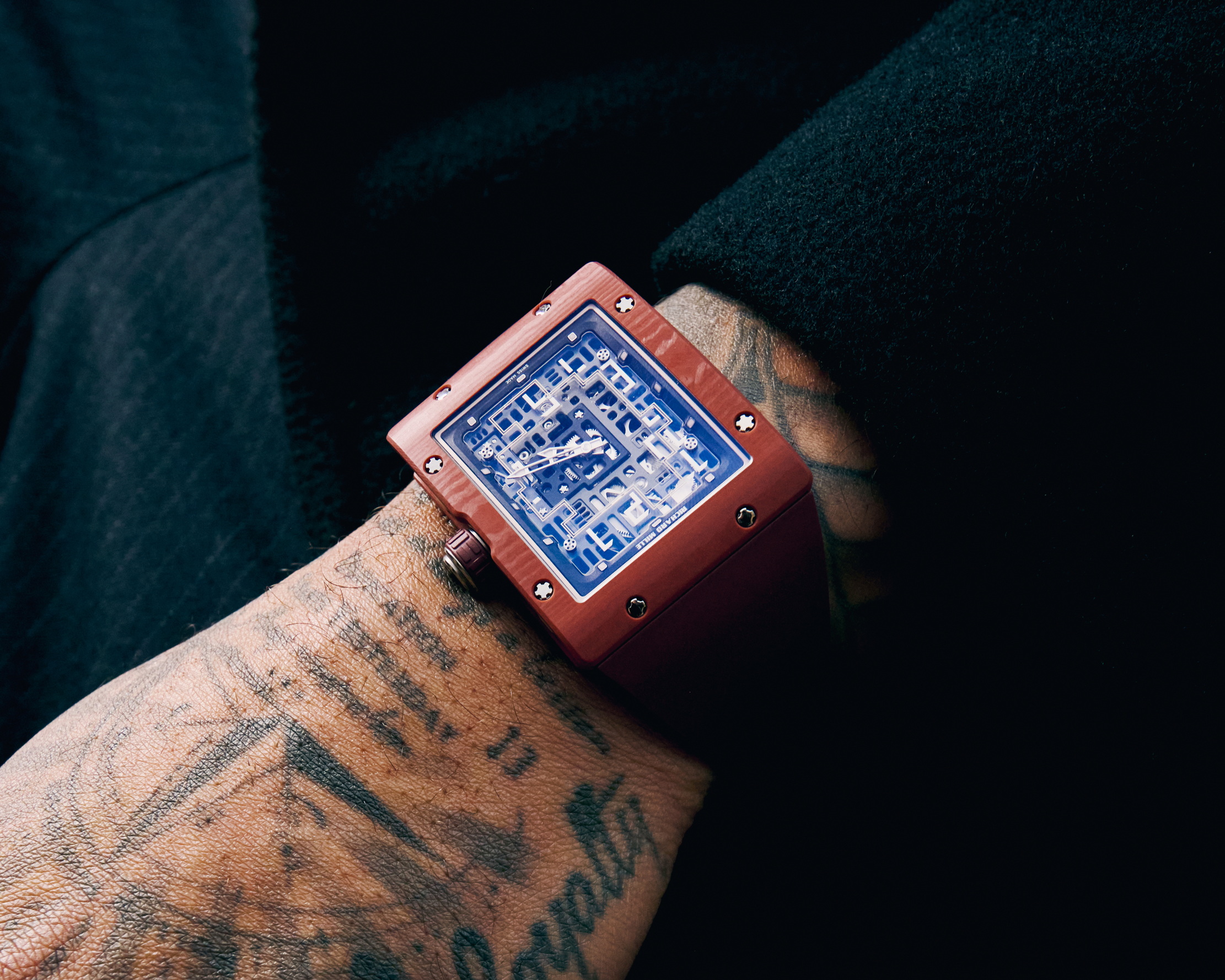My favourite painting: Peter Snow
Peter Snow chooses his favourite painting for Country Life.


The Duke of Wellington at Waterloo, 1892, by Robert Alexander Hillingford (1828–1904), 18in by 24in, Private Collection. Bridgeman Images.
Peter Snow says: This picture shows Wellington at the height of his triumph. He is shouting encouragement to one of the British infantry squares, which are being repeatedly charged by some 80,000 French heavy cavalry. It’s a critical phase of the battle that resulted in the utter defeat of Napoleon. And it shows how vital was the constant presence—often dangerously near the front line—of the man whom I regard as Britain’s greatest commander. I particularly like the way the artist has highlighted his famous telescope; it was while Wellington was encouraging his redcoats to stand firm that he spotted Marshal Blücher’s Prussians on the east side of the battlefield racing to his help. Between them, Wellington and Blücher helped establish the peace that gave Europe a century of relative stability.
Peter Snow is a television and radio presenter. His new book, The Battle of Waterloo Experience, co-authored with his son Dan, is published on May 7th, 2015.
John McEwen says: Robert Alexander Hillingford was among the foremost Victorian historical genre or ‘costume realist’ painters. Along with two of the kind, gow and Meissonier, he was noted for Napoleonic scenes. For all his attention to antiquarian authenticity, he insisted that ‘the cut of a coat should never be allowed to intrude or assert itself on canvas to the detriment of the rendering of a scene as a whole’. His subjects, usually military, ranged from the Middle Ages to contemporary scenes from the last Boer War.
Hillingford was born in London, the son of a professional soldier. Part of his childhood was spent in Boulogne, where, from the age of six, he was taught drawing by a professional artist. As a teenager, he studied for five years at the Kunstacademie, Dusseldorf, and then went via Munich to Italy, where he married an Italian and lived and worked in Rome, becoming a member of the German Artists’ Club. In 1864, he returned to London and thereafter exhibited regularly at the Royal Academy, although he was not elected an academician until 1901. He was a founder member and vice-president of the Kernoozer’s Club (which owed him its name) for specialists in arms and armour.
A letter from an English officer at Waterloo, which was sold recently at Bonhams’ commemorative Waterloo sale, gave further accounts of the Iron Duke’s fabled courage, one of which described him writing an order while being showered with earth from a french cannonball. This picture fetched £4,200 in 1987 and a larger version made £13,750 in 1990. The Hillingford revival has since stalled, with the £32,000 record price unchanged since 2000.
This article was originally published in Country Life May 6, 2015.
Sign up for the Country Life Newsletter
Exquisite houses, the beauty of Nature, and how to get the most from your life, straight to your inbox.
Country Life is unlike any other magazine: the only glossy weekly on the newsstand and the only magazine that has been guest-edited by HRH The King not once, but twice. It is a celebration of modern rural life and all its diverse joys and pleasures — that was first published in Queen Victoria's Diamond Jubilee year. Our eclectic mixture of witty and informative content — from the most up-to-date property news and commentary and a coveted glimpse inside some of the UK's best houses and gardens, to gardening, the arts and interior design, written by experts in their field — still cannot be found in print or online, anywhere else.
-
 A rare opportunity to own one a family home on Vanbrugh Terrace, one of London's finest streets
A rare opportunity to own one a family home on Vanbrugh Terrace, one of London's finest streetsThis six-bedroom Victorian home sits right on the start line of the London Marathon, with easy access to Blackheath and Greenwich Park
By James Fisher
-
 Materials, textures, construction, expression: A Brutalist watch on your wrist
Materials, textures, construction, expression: A Brutalist watch on your wristLuxury watchmakers are seeking to bridge the gap between two contrasting styles, with exciting results.
By Chris Hall
-
 My favourite painting: Allan Mallinson
My favourite painting: Allan MallinsonMilitary historian Allan Mallinson picks an image of 'faith, generosity and ultimate sacrifice'.
By Charlotte Mullins
-
 My Favourite Painting: Piet Oudolf
My Favourite Painting: Piet Oudolf'One cannot sense whether he is far out on the ocean or closer to shore, or what he may be watching or feeling in that moment as he stares towards the beach.’
By Country Life
-
 My Favourite Painting: Mary Plazas
My Favourite Painting: Mary Plazas'There is compassion, awe, humility, a knowing yet a questioning in the glistening eyes. It moves me, it inspires me beyond the need to know.’
By Country Life
-
 My favourite painting: Robert Kime
My favourite painting: Robert KimeRobert Kime shares his fondness for New Year Snow by Ravilious
By Country Life
-
 My Favourite Painting: Anna Pavord
My Favourite Painting: Anna PavordAnna Pavord chooses a picture which reminds her of where she grew up
By Country Life
-
 My favourite painting: The Duchess of Wellington
My favourite painting: The Duchess of WellingtonThe Duchess of Wellington chooses her favourite painting for Country Life.
By Country Life
-
 My favourite painting: Maureen Lipman
My favourite painting: Maureen LipmanMaureen Lipman chooses her favourite painting for Country Life.
By Country Life
-
 My favourite painting: Jacqueline Wilson
My favourite painting: Jacqueline Wilson'I looked at this painting and decided to write about a Victorian circus girl one day'
By Country Life